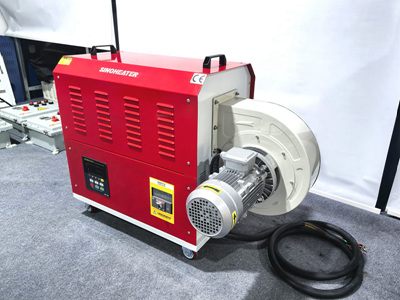Troubleshooting and Repair Guide for Heat Blower Heating Issues
When a heat blower fails to produce heat, it can disrupt daily operations or comfort. Understanding the root causes and knowing how to address them can save time and money. Below are common reasons for heating failure and step-by-step repair methods.
1. Electrical Component Malfunctions
The heating element, thermostat, or power supply often cause electrical-related issues.
- Heating Element Failure: Over time, the heating coil may burn out due to prolonged use or voltage fluctuations. To diagnose, use a multimeter to test for continuity. If the reading shows an open circuit, the element needs replacement.
- Faulty Thermostat: A malfunctioning thermostat can prevent the heater from reaching the desired temperature. Check the thermostat’s calibration by comparing its settings with an external thermometer. If discrepancies exist, recalibrate or replace the thermostat.
- Power Supply Problems: Loose connections, blown fuses, or tripped circuit breakers can interrupt power flow. Inspect the power cord, outlet, and internal wiring for damage. Reset breakers or replace fuses as needed.
2. Airflow and Mechanical Obstructions
Restricted airflow or mechanical issues can hinder heating performance.
- Clogged Air Filters: Dust and debris accumulation in filters reduce airflow, causing the unit to overheat and shut down. Remove and clean filters regularly using a vacuum or mild detergent. Replace filters if they’re damaged.
- Blocked Vents or Ducts: Foreign objects or debris in vents or ducts restrict heat distribution. Inspect and clear blockages using a brush or compressed air. Ensure vents are fully open and unobstructed.
- Fan Motor Issues: A worn-out or seized fan motor fails to circulate air properly. Listen for unusual noises or test the motor’s rotation manually. If the motor doesn’t spin freely, it may require lubrication or replacement.
3. Control System and Sensor Problems
Faulty controls or sensors can mismanage heating operations.
- Defective Control Board: A damaged control board may fail to send signals to heating components. Look for burnt traces, swollen capacitors, or loose connections. Replace the board if repairs aren’t feasible.
- Sensor Misalignment or Failure: Temperature sensors (e.g., thermistors) may drift or fail, causing inaccurate readings. Recalibrate sensors using manufacturer guidelines or replace them if they’re unresponsive.
- Timer or Programmable Settings: Incorrect timer settings or delayed start programs can delay heating. Verify and adjust settings via the control panel. Reset the unit to factory defaults if issues persist.
4. Safety Mechanisms and Overheating Protection
Built-in safety features may trigger shutdowns during overheating or malfunctions.
- Overheat Protection Activation: Most heat blowers have thermal cutouts that shut off the unit if temperatures exceed safe limits. Let the unit cool down, then inspect for airflow restrictions or component failures.
- Tip-Over Switch Issues: If the unit tilts, a safety switch cuts power. Ensure the blower is placed on a stable surface and test the switch’s functionality with a multimeter.
- Loose Wiring or Short Circuits: Frayed wires or internal shorts can trip safety mechanisms. Inspect wiring harnesses for damage and repair or replace as needed.
By systematically addressing these potential issues, users can restore their heat blower’s functionality. Always prioritize safety by disconnecting power before repairs and consult a professional if unsure about handling electrical components.




